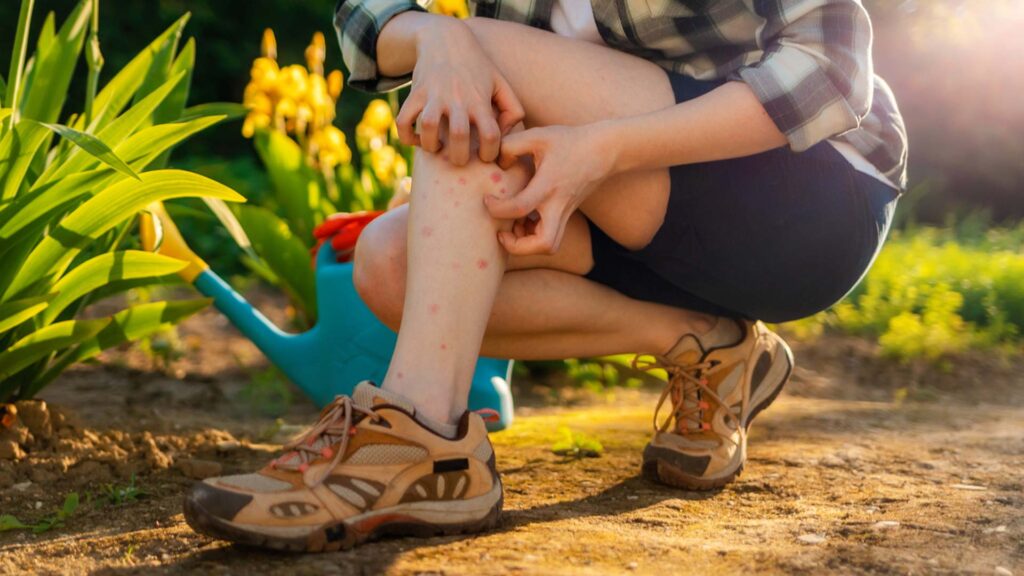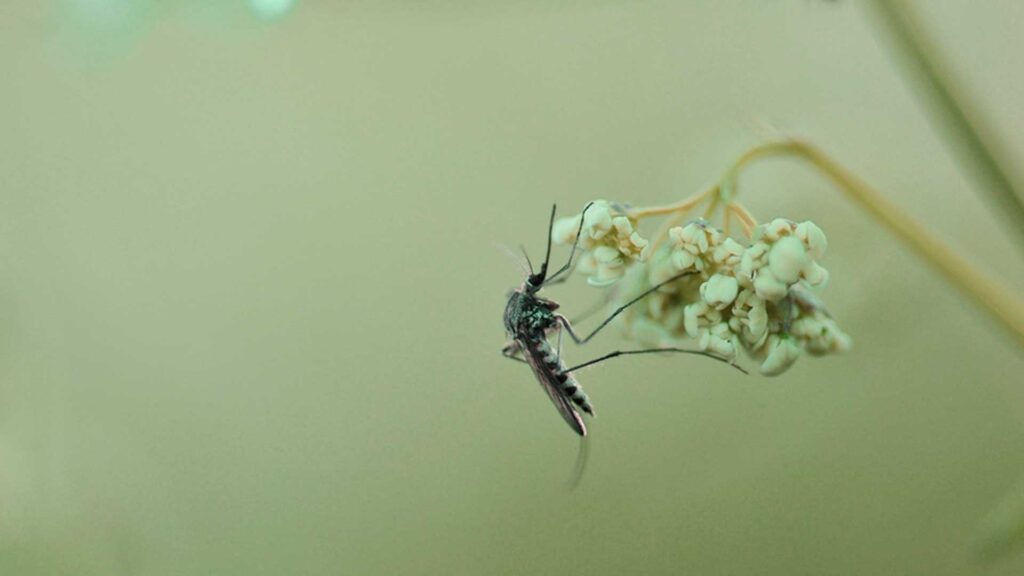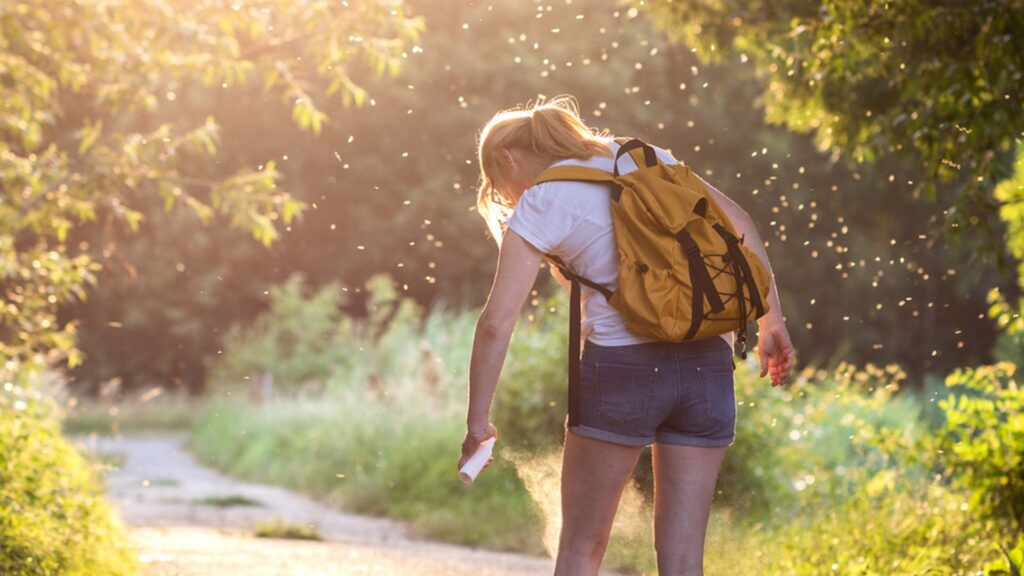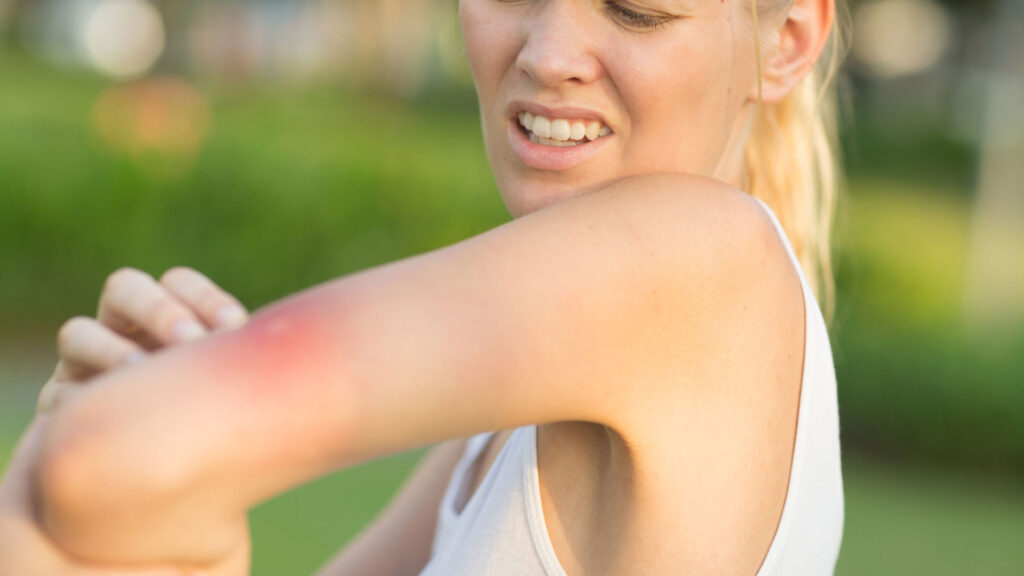How to get relief from mosquito bites
To get relief from mosquito bites, avoid scratching and wash the area with soap and water. Apply a cold compress to reduce swelling and itching. Over-the-counter treatments like hydrocortisone cream or calamine lotion can also be effective. For prevention, eliminate standing water around your home, use window screens, and apply insect repellents containing DEET, picaridin, or oil of lemon eucalyptus. These steps can help alleviate the discomfort of mosquito bites and reduce the risk of mosquito-borne diseases.

Table of Contents
- Understanding the Bite: A Closer Look at Mosquito Interactions
- Immediate Relief: Effective Strategies for Mosquito Bite Management
- Long-Term Strategies for Mosquito Bite Prevention
- The Role of Technology in Mosquito Control
- A Comprehensive Approach to Mosquito Bite Prevention and Relief
- Frequently Asked Questions About Getting Relief from Mosquito Bites
As the warm glow of summer evenings beckons families outdoors, a familiar yet unwelcome guest often intrudes upon these idyllic moments: the mosquito. These tiny, buzzing pests are not just a mere annoyance; they are carriers of some of the world’s most dangerous diseases. From the buzzing backyards of suburban homes to the balconies of urban apartments, mosquitoes make their presence felt, leaving behind itchy, red welts and a trail of health concerns.
In the United States alone, mosquitoes are known vectors of West Nile virus, Zika virus, and various forms of encephalitis. The threat they pose is not limited to remote or tropical areas; it’s a concern in our very backyards. The Centers for Disease Control and Prevention (CDC) regularly issues advisories on mosquito-borne diseases, underscoring the importance of understanding and combating these pests.
For homeowners, the battle against mosquitoes is often a summer-long endeavor. The quest for relief from mosquito bites is not just about comfort; it’s about safeguarding family health. While the market is flooded with repellents and gadgets claiming to ward off these pests, understanding the science behind mosquito attraction and bite relief is crucial for effective solutions.
The mosquito bite itself is a complex interaction between the insect and human skin. When a mosquito pierces the skin, it injects saliva that contains proteins and anticoagulants. This triggers an immune response in the human body, leading to the characteristic itching and swelling. The severity of the reaction varies from person to person, influenced by factors such as immune response, skin sensitivity, and even blood type.
This article aims to provide homeowners with a comprehensive guide to understanding and managing mosquito bites. From immediate relief methods to long-term preventive strategies, the focus is on practical, scientifically-backed solutions. As we delve into the nuances of mosquito behavior and the latest in prevention technology, readers will gain insights into how to protect their families and enjoy their outdoor spaces with peace of mind.
Effective Strategies for Mosquito Bite Prevention and Relief
| Strategy Category | Specific Action | Benefits | Considerations |
|---|---|---|---|
| Immediate Relief | Apply cold compress | Reduces swelling and itching | Simple, immediate solution |
| Use OTC remedies (e.g., hydrocortisone, calamine lotion) | Alleviates itching and discomfort | Ensure proper usage, especially for children | |
| Preventive Measures | Eliminate standing water (e.g., in flower pots, bird baths) | Reduces mosquito breeding grounds | Regular property maintenance required |
| Install window screens and mosquito nets | Physical barrier against mosquitoes | Initial setup cost; regular maintenance | |
| Use insect repellents (DEET, picaridin, oil of lemon eucalyptus) | Prevents bites | Follow instructions for safe application | |
| Community Action | Organize neighborhood clean-ups | Collective effort to reduce mosquito habitats | Requires community engagement and coordination |
| Educate residents on prevention | Increases awareness and collective action | Ongoing effort to maintain awareness | |
| Technological Advancements | Utilize mosquito activity apps | Provides real-time data for proactive measures | Dependence on technology and data accuracy |
| Support genetically modified mosquito projects | Potential long-term reduction in mosquito population | Ethical and ecological considerations |
Understanding the Bite: A Closer Look at Mosquito Interactions
Mosquito bites are a common yet complex phenomenon that affects millions worldwide. To effectively combat the discomfort and potential health risks they pose, it’s crucial to understand the science behind these bites.
A mosquito bite is not just a simple prick; it’s a sophisticated process. When a mosquito lands on your skin, it uses its proboscis – a specialized, needle-like mouthpart – to pierce the skin and locate a blood vessel. As it begins to feed, the mosquito injects saliva into the bloodstream. This saliva contains proteins and anticoagulants, which prevent blood from clotting and ensure a smooth flow of blood into the mosquito’s body.
The human body reacts to the foreign proteins in mosquito saliva. This reaction triggers the immune system to release histamine, a compound that helps white blood cells reach the affected area. Histamine’s arrival at the site causes blood vessels to expand, leading to redness and swelling – the telltale signs of a mosquito bite.
Dr. Jane Smith, an entomologist, explains, “The itchiness from a mosquito bite is essentially an allergic reaction. The severity of this reaction varies from person to person, which is why some individuals experience more swelling and itching than others.”
Not everyone reacts to mosquito bites in the same way. Some individuals may have a mild reaction with minimal itching and no visible mark, while others may develop large, inflamed welts. This variation is due to differences in immune system responses. Over time, people living in areas with high mosquito populations may develop a tolerance, experiencing less severe reactions to bites.
While most mosquito bites are harmless, they can lead to secondary complications if not managed properly. Excessive scratching can break the skin, creating openings for bacteria and leading to infections. In rare cases, individuals may experience severe allergic reactions, requiring immediate medical attention.
Beyond the itch, mosquitoes are vectors for various diseases, including malaria, dengue fever, Zika virus, and West Nile virus. The transmission of these diseases occurs when a mosquito bites an infected person and then bites someone else, passing the pathogens through its saliva. Understanding these risks underscores the importance of effective mosquito control and bite prevention strategies.
Understanding the intricate process of a mosquito bite – from the initial piercing to the body’s immune response – is key to managing its effects. Recognizing the variations in reactions and the potential for secondary complications and disease transmission can guide individuals in taking appropriate preventive measures and treatments. With this knowledge, homeowners and communities can better equip themselves in the ongoing battle against mosquitoes and their bites
Immediate Relief: Effective Strategies for Mosquito Bite Management
When it comes to mosquito bites, immediate action can significantly reduce discomfort and prevent further complications. Understanding the right steps to take immediately after a bite can make a substantial difference in the healing process.
Resist the Urge to Scratch: The first and most crucial step is to avoid scratching the bite. Scratching can aggravate the skin, increase inflammation, and potentially lead to secondary infections. It’s a natural reaction to want to scratch, but it’s vital to resist this urge.
Cleansing the Area: Gently wash the bite area with soap and water. This simple action helps remove any remnants of mosquito saliva and reduces the risk of infection. It’s a straightforward yet effective first line of defense.
Cold Compresses: Applying a cold compress or a clean cloth dampened with cold water can provide immediate relief. The cold helps to numb the area, reducing itchiness and swelling. This method is particularly effective for reducing the immediate discomfort that comes with a mosquito bite.
Topical Treatments: Over-the-counter topical treatments can be highly effective. Hydrocortisone cream, for instance, can reduce itching and swelling. Calamine lotion, known for its soothing properties, is another popular choice. These treatments work by reducing the inflammatory response caused by the mosquito’s saliva.
Antihistamines: For more severe reactions, oral antihistamines can be beneficial. They work by counteracting the histamine reaction in the body, which is responsible for the itching and swelling. It’s important to use these medications as directed and consider any potential side effects.
Aloe Vera: A natural remedy that is often recommended is aloe vera. Known for its soothing and anti-inflammatory properties, aloe vera can be applied directly to the bite. This not only soothes the skin but also aids in the healing process.
Avoiding Infection: If a bite becomes excessively swollen or shows signs of infection (such as increased redness, warmth, or pus), it’s important to seek medical attention. Keeping the area clean and monitoring for signs of infection is crucial, especially in children and those with weakened immune systems.
Home Remedies: Some people find relief in home remedies like applying a paste of baking soda and water, or using essential oils like tea tree oil. While these methods are not scientifically proven, they may offer some relief due to their soothing properties.
Immediate relief from mosquito bites centers on reducing the itch and preventing infection. From resisting the urge to scratch to using topical treatments and natural remedies, these steps can help manage the discomfort effectively. Remember, each individual may react differently to mosquito bites, so it may take some trial and error to find the most effective method for personal relief.
Protecting Vulnerable Populations from Mosquito Bites
Certain populations are more vulnerable to the health risks posed by mosquito bites. Here’s what you need to know to protect them:
- Children: Their immune systems are still developing, making them more susceptible to severe diseases from mosquito bites. Use child-safe repellents and ensure their play areas are free from standing water.
- Pregnant Women: Due to the risks associated with Zika virus, pregnant women should take extra precautions. This includes using EPA-approved repellents, wearing long-sleeved clothing, and avoiding travel to high-risk areas.
Consulting Health Professionals
If you or your family members develop symptoms after a mosquito bite, such as high fever, severe headache, or joint pain, it’s crucial to seek medical advice promptly. Early diagnosis and treatment can prevent severe complications from mosquito-borne diseases
Long-Term Strategies for Mosquito Bite Prevention
In the fight against mosquito bites, long-term strategies are crucial for effective management and prevention. These strategies not only provide relief but also minimize the risk of mosquito-borne diseases. Homeowners and communities can adopt several measures to create environments less conducive to mosquito breeding and more protective for individuals.
Environmental Control:
Eliminating breeding sites is a fundamental step in mosquito control. Mosquitoes lay eggs in standing water, so it’s essential to regularly inspect and remove any stagnant water sources around the home. This includes emptying water from flower pots, bird baths, and buckets, and ensuring gutters are clean and free-flowing. Dr. Jane Smith emphasizes, “Regular maintenance of your yard is key. Overgrown vegetation can provide shelter for mosquitoes, so keeping your lawn trimmed is important.”
Physical Barriers:
Installing physical barriers can significantly reduce the entry of mosquitoes into living spaces. This involves fitting windows and doors with fine mesh screens that are regularly checked for tears or gaps. Mosquito nets around beds provide extra protection, especially in areas with high mosquito activity.
Repellents and Protective Clothing:
Using insect repellents is a highly effective way to prevent mosquito bites. Products containing DEET, picaridin, or oil of lemon eucalyptus are recommended by health authorities. It’s important to apply repellents according to the instructions, especially on children and sensitive skin areas. Wearing long-sleeved shirts and pants treated with permethrin, especially during dusk and dawn when mosquitoes are most active, adds an additional layer of protection.
Landscaping Choices:
Certain plants are known to have mosquito-repelling properties, such as citronella, lavender, and marigolds. Incorporating these plants into garden landscaping can help deter mosquitoes naturally. However, it’s important to note that these plants are not a standalone solution but should be part of a broader mosquito control strategy.
Community Initiatives:
Community-wide efforts can amplify the effectiveness of individual actions. Organizing neighborhood clean-up days to remove potential mosquito breeding sites and sharing information about effective prevention methods can create a more comprehensive defense against mosquitoes. Communities can also engage with local health departments for larger-scale control measures like larviciding and adulticiding in public areas.
Monitoring and Education:
Staying informed about local mosquito activity and potential disease outbreaks is crucial. Many areas have mosquito control programs that provide regular updates and advice. Educating family members, especially children, about the importance of preventing mosquito bites and the correct use of repellents is also vital.
Technological Solutions:
Advancements in technology offer new avenues for mosquito control. From smartphone apps that track mosquito activity to innovative traps and environmentally friendly pesticides, these tools can complement traditional methods. Research into genetically modified mosquitoes and biological control agents like bacteria that target mosquito larvae is ongoing and shows promise for future large-scale control.
Long-term strategies for mosquito bite prevention require a multifaceted approach, combining environmental management, personal protection, community involvement, and staying informed about the latest developments in mosquito control. By adopting these measures, homeowners can create safer, more enjoyable outdoor living spaces and contribute to the broader effort to reduce the impact of mosquitoes on public health.
The Role of Technology in Mosquito Control
In the realm of mosquito control, technology is emerging as a game-changer. One of the most groundbreaking advancements is the development of genetically modified mosquitoes. Scientists have engineered these mosquitoes to have a reduced ability to transmit diseases or to produce offspring that do not survive to adulthood. For instance, a notable project involves the release of genetically altered male mosquitoes that, when they mate with wild females, result in larvae that never reach maturity. Trials in various parts of the world, including the Florida Keys and Brazil, have shown promising results in reducing mosquito populations without the use of harmful pesticides.
Case Study: A Community Approach in Florida
In 2019, the small community of Lakeside, Florida, faced a daunting challenge: a mosquito infestation of unprecedented scale. The situation was not only causing discomfort but also raising concerns about the spread of mosquito-borne diseases. In response, the community launched an innovative, comprehensive mosquito control program, emphasizing both individual responsibility and collective action.
The cornerstone of this initiative was a neighborhood-wide clean-up campaign. Residents, local businesses, and community groups came together to remove standing water from common areas, such as public parks, and private properties. This effort targeted potential mosquito breeding sites, including old tires, plant saucers, and clogged rain gutters. Simultaneously, the community organized educational workshops led by public health officials. These sessions focused on personal protective measures, such as the proper use of insect repellents, the importance of wearing long sleeves and pants during peak mosquito activity hours, and the installation of window screens and mosquito nets.
The results of this community-driven approach were remarkable. Within a few months, there was a noticeable decrease in mosquito populations, as evidenced by the reduced number of bites reported by residents and lower trap counts. Moreover, the initiative fostered a sense of community solidarity and empowerment, as residents saw the tangible results of their collective efforts. This case study from Lakeside, Florida, serves as a testament to the effectiveness of community engagement in addressing public health challenges and highlights the potential for similar approaches in other regions facing mosquito-related issues.
Apart from genetic modification, technology is also enhancing our ability to monitor and predict mosquito activity. Smartphone applications and online platforms are harnessing the power of big data and citizen science to track mosquito prevalence. Users can report sightings and bites, contributing to real-time maps that highlight hotspots. This data is invaluable for both individuals and public health officials, allowing for targeted control measures and timely alerts to communities. Additionally, researchers are utilizing satellite imagery and AI algorithms to predict mosquito breeding grounds based on environmental conditions. This predictive modeling enables preemptive action in areas likely to experience outbreaks, thereby mitigating the risk of mosquito-borne diseases.
These technological innovations represent a significant leap forward in mosquito control. By combining genetic science, data analytics, and community participation, we are moving towards more effective, environmentally friendly, and sustainable methods of managing mosquito populations. As these technologies continue to evolve, they offer hope for a future where mosquito-borne illnesses are significantly diminished, and outdoor activities can be enjoyed with fewer concerns about these persistent pests.
A Comprehensive Approach to Mosquito Bite Prevention and Relief
As we delve deeper into the conclusion of our discussion on mosquito bites, it’s crucial to emphasize the multifaceted approach required to tackle this issue effectively. Mosquito bites, often dismissed as mere annoyances, carry significant health risks, including the potential transmission of serious diseases. Therefore, a comprehensive strategy that combines personal protection, community action, and technological innovation is essential for effective management and prevention.
Individuals play a critical role in mosquito bite prevention. Using insect repellents correctly and consistently, especially those approved by health authorities like the CDC, is a critical first line of defense. Wearing appropriate clothing, such as long sleeves and pants, especially during peak mosquito activity times like dusk and dawn, adds an extra layer of protection. For those with sensitive skin or allergies, exploring natural repellent options like oil of lemon eucalyptus can be a safer alternative.
The fight against mosquitoes is not just an individual battle; it requires community effort. Public health campaigns and neighborhood initiatives, like the one successfully implemented in Florida, demonstrate the power of collective action. These programs not only focus on reducing breeding grounds but also educate the public about the risks associated with mosquito bites and the importance of personal and communal preventive measures.
The role of technology and research in combating mosquito-related issues cannot be overstated. Innovations like genetically modified mosquitoes, while controversial, offer a glimpse into potential long-term solutions for controlling mosquito populations. Additionally, the development of apps and online tools that provide real-time information about mosquito activity helps individuals make informed decisions about outdoor activities.
It’s important to recognize the global dimension of this issue. Climate change is altering mosquito habitats and breeding patterns, potentially increasing the risk of mosquito-borne diseases in areas previously unaffected. This global shift necessitates international cooperation in research, resource allocation, and policy-making to address the evolving challenges.
Healthcare plays a pivotal role in both the prevention and treatment of mosquito-borne diseases. Access to proper medical advice and treatment for those who experience severe reactions to bites or contract mosquito-borne illnesses is crucial. Public health systems need to be equipped to handle outbreaks and provide communities with the necessary support and information.
Dealing with mosquito bites requires a holistic approach that spans personal protection, community action, technological innovation, global cooperation, and healthcare support. By integrating these elements, we can not only mitigate the immediate discomfort caused by mosquito bites but also address the broader public health challenges they represent. As we continue to enjoy outdoor activities and the beauty of nature, staying informed, vigilant, and proactive remains our best defense against the risks posed by these persistent pests.
Frequently Asked Questions About Getting Relief from Mosquito Bites
Why do mosquito bites itch so much?
Mosquito bites itch due to the body’s reaction to mosquito saliva. When a mosquito bites, it injects saliva into the skin, triggering an immune response that causes itching and swelling.
How can I prevent mosquito bites?
Prevent mosquito bites by eliminating standing water around your home, using window screens and mosquito nets, and applying insect repellents containing DEET, picaridin, or oil of lemon eucalyptus. It’s also advisable to wear long sleeves and pants in mosquito-prone areas.
Are there any natural remedies for mosquito bites?
Yes, natural remedies like aloe vera, honey, and baking soda paste can provide relief. Aloe vera has cooling properties, honey is an anti-inflammatory and antibacterial agent, and baking soda can reduce itching and swelling.
Can scratching a mosquito bite be harmful?
Yes, scratching a mosquito bite can break the skin, leading to infection. It’s best to avoid scratching and use treatments to alleviate the itch.
Are mosquito bites dangerous?
Mosquito bites can be dangerous as they can transmit diseases like West Nile virus, Zika, and malaria. It’s important to take preventive measures to avoid bites, especially in areas known for mosquito-borne diseases.
How can I treat mosquito bites in children?
For children, use mild soap and water to clean the area and apply a cold compress. Use children-safe insect repellents and consult a pediatrician before applying any topical creams or ointments.
What should I do if I have an allergic reaction to a mosquito bite?
If you experience symptoms like excessive swelling, fever, hives, or difficulty breathing, seek medical attention immediately as these may be signs of a severe allergic reaction.
How effective are mosquito nets and screens?
Mosquito nets and screens are very effective in providing a physical barrier against mosquitoes, especially during sleep or in areas with high mosquito activity.
Can diet or lifestyle changes help in preventing mosquito bites?
While there’s no conclusive evidence that diet can prevent mosquito bites, maintaining a healthy lifestyle and using preventive measures like repellents and protective clothing are the most effective strategies.




